Ralph Paine – 3 August, 2015
Born of the nymph Zoom in Arcadia, Pan is a god of fields, flocks & herds… Of mountain forests & abandoned windswept places - the word “panic” is derived from Pan. Emerging from this pastoral yet somewhat uncultivated beginning, later on Pan became a Universal deity of infamous renown. With a man's head & upper body, goat's legs & horns, Pan is a sexually prolific hybrid, lover of animals, shepherds, nymphs & wine, symbol of fecundity & contagion alike.
1.
In the beginning, the sketch…
2.
HISTORY
During the latter part of the glorious 18th century Captain Cook led three exploratory voyages to the Pacific Ocean, mainly for the purpose of observing the Transit of Venus. But in addition, the voyages had botanical, military, navigational, ethnographic, &c., agendas - agendas productive of an immense & labyrinthine archive of charts & maps, plant & animal specimens, objects (“artificial curiosities”), drawings, oils, watercolours, written logs & journals… Cook’s “first contact” period marked a last new beginning in the so-called “discovery” of the New World, but it marked too an all subsuming new beginning for the “native” inhabitants of the region, a beginning unique in its geopolitical & cultural alignments & adjustments - alignments & adjustments from then on haunted by the spectre of modernity, by the region’s very own Transit of Venus as it were, yet observed & experienced by these inhabitants from the other side of things. And thus, from out of this constantly transforming “other side” so many vital alternatives to modernity have arisen - and continue to arise - here and elsewhere. Whether today any of these alternative paths are leading out beyond the horizon of the modern, or whether they are spiralling back into the almost inescapable vortexes of postcolonial identity politics and a neo-liberal, capitalist axiomatic is a hard call. But whatever the case, for those involved in blazing such paths the now globally dispersed Cook archive - along with everything it has spawned - remains a “primal scene” for their projects.
3.
Lisa Reihana’s in Pursuit of Venus [infected], 2015, enters this “scene” via an amazing resistance to the presentism of modernity. A combinatory of mytho-praxis & sci-fi-praxis, iPOVi renders things-historical ethnographically anew, futuristic yet anti-modern. Here, in a grand scale virtuosity of projected, hallucinated sound & vision - as if lost in the becoming-native of a Universal time without time - everything/everybody is indigenous: common, fresh, māori with a small “m.” 1st contacts, 2nd, 3rd, 1000th - all points of view are welcome, hosted, criss-crossed, dissolved, re-singularized inside a resplendent & eternally rotating xeno-world. Reihana’s projected dream is of a Machinic Vitalism unchain’d.
4.
In Islands of History Marshall Sahlins describes indigenous life-ways as forms of “mytho-praxis.” Within such a praxis the everyday, practical lives of its participants are lived as if local level repetitions of cosmic myth. Thus, events which have occurred to the gods and the ancestors - astral configurations, the sun and moon, animals, the dead, hills & streams, forests & swamps, the wind - are said to be continually reoccurring in the present life-way; there are dynamic links between cosmic myth and quotidian material existence in the participants’ world. After Nietzsche, Sahlins names these links “eternal returns of the same.”
5.
“In the Forest,” comments Mr. Crawford, “ev’ryone comes ‘round in a Circle sooner or later. One day, your foot comes down in your own shit. There, as the Indians say, is the first Step on the trail to Wisdom.”
- Thomas Pynchon, Mason & Dixon
6.
For Marx - that first demonologist of the Bourgeois Age - the yet to come, aka the-only-Future-worth-hoping-for, is not an Ideal to be achieved; it is not a state of affairs to be established or a readymade plan to be set in place. Rather, this Future is to be brought about by actions which resist - & continue to resist - the given limits & contradictions of the Present; limits & contradictions produced by the very ways the Past is materialized in the here and now, i.e. by the ways histories & collectives are made & remade. Yet what kinds of actions? Doubtless political, economic, & pedagogical ones, but art is a decisive aspect. Art possesses a remarkable potential to resist, or even abandon, the Present. Certain kinds of writing, certain kinds of painting or cinema, may be felt as actual “traces” of the Future, filaments of as yet unrealizable social desire existing in the here and now. In his recent study of the science fiction genre - after Ursula K. Le Guin, wonderfully titled Archaeology of the Future - Fredric Jameson names these filaments and traces “Utopian forms.” Sci-fi-praxis.
7.
“When they went out to the ship, seeing some of the strangers peering out of the holes at the back one man said, “Those are the gods of the upland of Mouths-shining-with-fat (Kanukuhinuhinu), Peep (Ki’ei) and Peer (Halo).” Seeing one of the strangers with a telescope they said, “Long-eyes” (Maka-loa) and “Eyes-that-rove” (Na-maka-oka’a) the stargazers who see the heavens and the earth … When they saw the strangers letting out ropes the natives called them Ku-of-the-tree-fern (Ku-pulupulu) and Coverer of the island (Moku-hali’i). These were gods of the canoe builders in the forest.”
- Samuel Kamakau, Ruling Chiefs of Hawai’i
8.
Born of the nymph Zoom in Arcadia, Pan is a god of fields, flocks & herds… Of mountain forests & abandoned windswept places - the word “panic” is derived from Pan. Emerging from this pastoral yet somewhat uncultivated beginning, later on Pan became a Universal deity of infamous renown. With a man’s head & upper body, goat’s legs & horns, Pan is a sexually prolific hybrid, lover of animals, shepherds, nymphs & wine, symbol of fecundity & contagion alike. But he’s also depicted while at rest playing his eponymous pipes, a metaphor for Universal music, the universe-as-music, which, said differently, is when a local landscape (milieu) becomes an ever expanding (and returning) Cosmic Refrain. Today the prefix “pan-” has the sense of “all,” as in “panorama,” meaning “all views in one,” and “pantheism,” meaning “all is God.” Pan thus encompasses two concepts, is a hybrid of two concepts: the One & the All - or, if one prefers, the singular & the multiple. Pan, then, is an entity whose singular nature may be expressed in a multiplicity of different ways; a being with multiple potentials of becoming; a singularity for whom constant change is its essence. Hence: Pan is the Event as universal Process, a happening of the All, a movement of enfolded events, field of fields, multiverse. Or, Pan is that which holds together all events in their singular differences & allows them to resonate, echo, and communicate as the Event.
9.
All pixelated colour fields & vector graphics, iPOVi’s post-Cinema dreamscape rolls by like some 18th century Dr Seuss Arcadia: The Pacific? The Caribbean? On Venus? In fact, it’s a schematized copy of the picturesque pleasure landscape in Dufour et Cie, printer & publisher, Jean-Gabriel Charvet, designer, The Voyages of Captain Cook (Les Sauvages de la mer Pacifique) 1805, a panoramic wall paper of Napoleonic repute: “Curieux!” Superimposed inside said dreamscape, along 5 or 6 different horizontals of linear-perspective depth, filmed human tableaux of exchanges and rites play out, xeno/local manoeuvrings & mix-ups during some perpetual day-without-night on an island - any island whatsoever - a calendar-less, stargazing free zone: no Matariki, moon, or Venus; no gloaming or rosy finger’d dawn. Only that time when the shadows are at their shortest. Kava and alcohol (tapu) figure, but no food (noa) is eaten. There’s poetry & journal writing, idle talk, and a little desultory equipment tinkering; a portrait sitting is prepared, but there’s no gardening or fishing going down, no weaving or manufacture in progress, no work; & no animals sleepin’ or snortin’ or slinkin’ around. Everything’s rhythmic, ritualized, performative - all dressed up like in church: Sunday, guilt & punishment, sacrifice day, offerings & salutations, singing, gift of gifts… Captain Cook’s Thigh [unwrapped].
10.
“A further problem with the terminology of parts is that many pantheists have wanted to claim that God or nature is not just the whole or totality of things, but is somehow the inner essence or heart of each individual thing. This may be expressed in the idea that somehow the whole is present in each of its parts, a suggestion whose meaning has often been left metaphorical or obscure. Giordano Bruno, for example employs the two illustrations of a voice heard in its entirety from all sides of the room, and that of a large mirror which reflects one image of one thing but which, if it is broken into a thousand pieces, each of the pieces still reflects the whole image … A thesis of the complete interpenetration or interrelation of everything, the claim being made here is related to that defended by Leibniz (who was not a pantheist) that each monad is a mirror to the entire universe.”
- From “Pantheism” in Stanford Encyclopaedia of Philosophy
11.
“Demons jump ship.”
- Folk saying
12.
Shape-shifting his way from Arcadia to Universal infamy - “moving amid mobility” - Pan came full karmic cycle in the Pacific Ocean, aka the New Arcadia. Some say he died there, on a beach in Hawai’i, the only Greek god to have ever died. But others claim recent sightings, in waterfront bars, hitch-hiking back roads, attending tangi…
13.
Back in England, Pan had enjoyed the company of revolutionaries, free thinkers, mystical fanaticks, poets & pamphleteers, feminists… Radical Enlightenment figures such as Gerard Winstanley, John Milton, Margaret Cavendish, Roger Williams, John Lilburne, Anna Trapnel, Edward Sexby, Abiezer Coppe, and Lucy Hutchinson, translator of Lucretius’ beautiful text De Rerum Natura. Something was in the Air, a-bloomin’ & a-buzzin’, and Pan - always with flute in pocket & stout knobbly stick in hand - wandered the Realm, sniffing out Robert Fludd manuscripts and rare copies of Spinoza’s Tractatus Theologico-Politicus in dusty basement booksellers on the High Streets, following Leylines hilltop to hilltop, cloud-gazin’, cart wheelin’ along rutted highways ‘n’ byways , lost/never lost, of herds & crops named Agriculture, all twisted dry grass & wheat & pollen, snoozin’ near brooks down in sun splashed glades, at night in hollow trees or caves, in company of “the rav’n & cat, the owl & bat,” breakfasts of blackberries and wild apples, & all the while making dew tracks to new towns or old Roman sites, over gates in thunder storms, past mile-markers, crossroad hangin’ trees, sign posts & doorways, one day even observing a bronze knocker modell’d in his own likeness all polish’d shine in the low slantin’ light, white roses climbing Cromwellian brickwork, lavender, rosemary, evening primroses & makin’ nosegays outta violets, and next thing he’s hanging out & whist playing in the elegant drawing rooms of brief-all-too-brief acquaintances who lured him back out again on clandestine cider & sandwich picnics & frolics in beautiful woodland parks, behind hedgerows, hay loft 69-ing, or escort’d him to Scientifick Club meetings & Musical evenings in town. A stirring entrepreneurial spirit eventually led him back to London. Sheer recklessness took him on to Plymouth.
14.
“The English are precisely those nomads who treat the plane of immanence as a moveable and moving ground, a field of radical experience, an archipelagian world where they are happy to pitch their tents from island to island and over the sea. The English nomadize over the old Greek earth, broken up, fractalized, and extended to the entire universe.”
- Deleuze & Guattari, What is Philosophy?
15.
“After these ceremonies of peacemaking, a number of people climbed on board the Dolphin, including a ‘Stout & a noble looking Man,’ who seemed to be a chief, talking loudly and gesturing in an effort to communicate with the Europeans. The sailors did not understand a word, but held up cloth, knives, beads and ribbons, and produced hogs and fowl, grunting like pigs and crowing like cocks to indicate what they wanted. The Tahitians did not seem surprised by this since they had pigs and chickens on shore, and imitated these noises, but when sheep and goats were produced and a billy-goat butted one of them in the haunches, they leapt overboard in terror.”
- Anne Salmond, The Trial of the Cannibal Dog: Captain Cook in the South Seas (emphasis added)
16.
LIGHT
At around the same time as Albert Einstein was inventing his theory of relativity apropos very large scale (cosmological) events, Neils Bohr was conducting research into very small scale (sub-atomic) events. Bohr discovered that during one set of experimental conditions light shows itself to be composed of particles; but during a different set of conditions it shows itself to be composed of waves. Logically, these two properties should be mutually exclusive: how can light be composed of both particles (discontinua) & waves (continua)? No synthesis of these two qualities seems possible - one requires absolute connectivity, the other imposes breaks. Analogously, in yet another set of experiments, physicists had discovered that when a sub-atomic particle’s speed is fully measured and determined, then its exact position in space cannot be ascertained… And vice versa: when determining a particle’s position, then its exact speed is unavailable to any observer. Bohr named this strange two-fold quality of light “complementarity.” Complementarity, then, signifies the conceptual provision whereby a point of view is always to be considered a constantly moving element of the One-All, or said differently: there is no outside that is not simultaneously an inside; no periphery that is not simultaneously a centre.
17.
iPOVi might have been called iPOVi/iPOAi … in Pursuit of Venus [infected]/in Pursuit of Arcadia [infected], as in Point of View/Point of Audition: fold-in. A Fugue state: one cluster of sounds following another, one fabled & exquisitely costumed scenario following another… “Folding, unfolding, refolding.” And everything’s on “Repeat.” Bach & birdsong follow a sea shanty, which follows the tap tap tapping of tattooing, waiata & lapping waves, cries & proclamations. There are drums drumming, chants chanted, then swirling synthesizers, crescendo & diminution, leading & receding. The almost imperceptible whisperings of love follow whip lashes; plucked strings supplement story-telling; angry shouts & demands draw back to laughter & then the guffaws ‘n’ groans of a mock birth scene… A wero gives way to the masked silence of Death… And vice versa. Looping, mesmerizing, sublime - as if “present for all of time,” iPOVi sweeps everything/everybody away along lines composed of nothing but “pure forces attributable only to the Cosmos” (D&G, ATP).
18.
“Outside, of course, only those who knew how to wish and sail in the sworn team would make their fortune. The crews on the discovery ships were the first objects of the naïve and effective group modelling processes that were re-described in the present day as “corporate identity” techniques. On the ships, the advancing pioneers learned to want the impossible in a team whose members were all dreaming the same thing. In psycho-historical terms, the central New European principles of constant progress and general enrichment, are essentially projections of team visions from the early days of nautical globalization back onto a national and social horizon. They constitute attempts to transfer the categorical Forwards of seafaring back onto the circumstances of settled life.”
- Peter Sloterdijk, Globes: Spheres II
19.
In pursuit of Venus? Yes, but what happens at home while the seafarers are away? There are multiple versions of Pan’s origins, and many of them name Penelope, wife of the seafaring hero Odysseus, as his mother. Versions told by Duris of Samos & the Vergilian commentator Servius confirm this, but with a nice twist. Both relate that while Odysseus was absent, Penelope slept with all of the “one hundred and eight” men who came a-courtin’, giving birth to Pan as a result. Upon his return, Odysseus banished Penelope and her new born child to Arcadia. This version of Pan’s origin is said to reflect an obscure etymology associating Pan’s name (Πάν) with the Greek word for “all” (πᾶν).
20.
James Cook first went to sea onboard the Freelove, a collier owned by his Quaker patron Captain John Walker at the old port of Whitby in Yorkshire. The Industrial Revolution - marking the transition from a mechanical world to one engulfed by thermodynamics - was yet to ignite, but doubtless Cook was familiar with the demonic qualities & potentials of coal. In a purely mechanical world all productive force is generated by animal & human labour, & by “nature” - wind, gravity, tides. This is a world of levers & pulleys, winches & cogs, wheels, sails, horses & oxen, ropes & chains; a world perfectly plotted by classical geometry & Newtonian physics; a world seemingly stable & eternally sustainable. But the steam engine, with its fire and smoke, destroyed all that. Michel Serres in Hermes: “Fire replaces air and water to transform the Earth.” Not, that is, the fire of the hearth or forge, but the fire of the motor, a fire that will overtake the world and impose a completely new model of time wherein “the instant is not statically immobilised, fixed like a mast,” but instead is in “an unforeseen state, hazardous, suspended, drowned, melted in duration, dissolved.” It is precisely this newly dissolved “instant” which the modern sciences set out to tame, re-fix, & control via the development of statistical analysis, insurance tables, thermodynamics & cybernetics, Taylorism, infometrics, algorithmic financialization, &c. - a complete epidemiology of the putrefied Black Sun.
21.
Once “opened up” and claimed by European nations, the New World provided vast material resources for capitalist production to exploit, new frontiers of what Marx in Capital Vol. 1 named “primitive accumulation,” i.e. the taking over of lands, forests, minerals, fisheries, whole populations, &c., for the purposes of extracting surplus value in the form of rent or profit. The process was already happening throughout parts of Africa, India, Asia, & in Europe itself (Ireland, the Clearances, industrialization, taxes & national debt, &c.) & once expanded to include the New World a truly modern form of space & time began to emerge, in the construction and administration of a one-sided relation of “brute force” (Marx) between the powerful of Europe (& their local collaborators) & the wretched multitudes of the Earth - indigenous collectives, peasantry, and a newly forming proletariat: all the stories of mapping & navigation, of trade routes and slavery, of road, tunnel, railway and canal building, of latitudes and longitudes and mass migration, of Greenwich meantime and the mean-time of exploitation and disease in fields, mines, factories & forests are familiar to us. But so too are the accounts & theories of struggle & resistance: being-against. When Europe declared itself the fixed centre of the world, all the elsewheres of the planet were ranged to various measured degrees as periphery: sub-zones, dark places, the East, South, colonies, the new frontier, Otherness… The cultural, economic, artistic, political to-ing & fro-ing between centre & periphery - both conceptually & in actually travelled extension - was to create this dynamic, modern form of space & time. In a recent modification of Marx, David Harvey has renamed “primitive accumulation” as “accumulation by dispossession,” asserting that the word “primitive” causes a misunderstanding as to the nature of capitalism. Harvey’s point is that the original, so-called “primitive” stage of capitalism is not some transitory phase that need not be repeated once achieved. Rather, Harvey maintains correctly that primitive accumulation or accumulation by dispossession is a systematic process that continues today within all processes of capital accumulation, & on a global and socio-ecologically devastating scale (See David Harvey, The New Imperialism).
22.
An anti-Imperialism for the Anthropocene? Pan-shamanism? Eduardo Viveiros de Castro in Cannibal Metaphysics: “By seeing nonhuman beings as they see themselves […] shamans become capable of playing the role of active interlocutors in the trans-specific dialogue and, even more importantly, able to return from their travels to recount them; something the ‘laity’ can only do with difficulty. This encounter or exchange of perspectives is not only a dangerous process but a specifically political art: diplomacy. If Western relativism has multiculturalism as its public politics, Amerindian shamanic perspectivism has multinaturalism as its cosmic politics.”
Ralph Paine
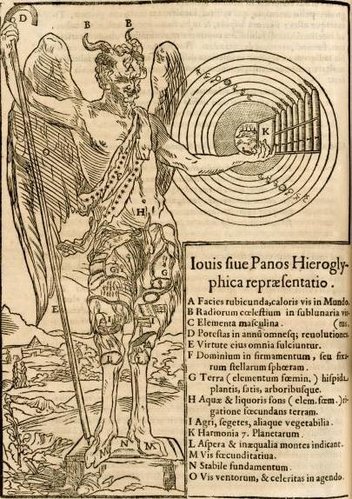

 Two Rooms presents a program of residencies and projects
Two Rooms presents a program of residencies and projects Advertising in this column
Advertising in this column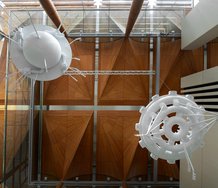
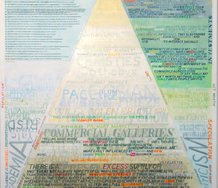
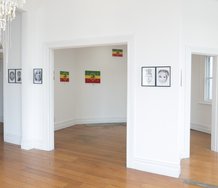
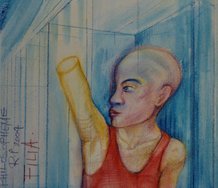
This Discussion has 0 comments.
Comment
Participate
Register to Participate.
Sign in
Sign in to an existing account.